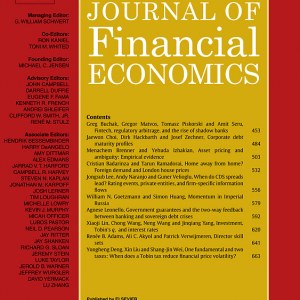
Menkveld, A. and Hendershott, T. (2014). Price Pressures Journal of Financial Economics, 114(3):405--423.
-
Affiliated author
-
Publication year2014
-
JournalJournal of Financial Economics
We study price pressures, i.e., deviations from the efficient price due to risk-averse intermediaries supplying liquidity to asynchronously arriving investors. Empirically, New York Stock Exchange intermediary data reveals economically large price pressures, 0.49% on average with a half life of 0.92 days. Theoretically, a simple dynamic inventory model captures an intermediary's use of price pressure to mean-revert inventory. She trades off revenue loss due to price pressure against price risk associated with staying in a nonzero inventory state. The closed-form solution identifies the intermediary's risk aversion and the investors' private value distribution from the observed time series patterns of prices and inventories. These parameters imply a relative social cost due to price pressure, a deviation from constrained Pareto efficiency, of approximately 10% of the cost of immediacy.